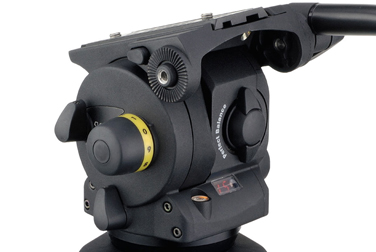Tripods
All tripods have a couple parts in common. The two most basic parts are the legs and the head. Typically, tripod legs are expandable--so you can set the tripod to any height you want.
The tripod "head" is the part that actually attaches to the camera. There are three basic types of tripod heads:
HEADS:
1) Fluid Head: Good tripods have a "fluid" head. Imagine two chambers of goo inside the head. When you pan or tilt the tripod, you, in effect, you push the goo from one chamber to the next. Why create goo chambers? Because the goo offers resistance. It dampens jerky movements and the result is smooth, professional camera movement. One way to understand how this works is to imagine yourself running in three feet of water. When you are in water, you can't make any quick moves; your attempt to run is slowed down and "smoothed out." That's a pretty good analogy to how fluid heads work.
2) Friction Head: Cheaper tripods have "friction" heads. These heads offer no resistance, and so it is hard to do smooth pans and tilts. Your natural shakiness is transferred to the shot. If you try really hard, you can do a pretty good pan with a friction head, but it is a LOT easier with a fluid head.
3) Cam Heads: Big studio cameras have "cam" heads--which consist of a collection of counterweighted gears and balances. Cam heads work great, but they weigh a hundreds pounds or more and are very expensive.

Vinton brand Fluid head.

